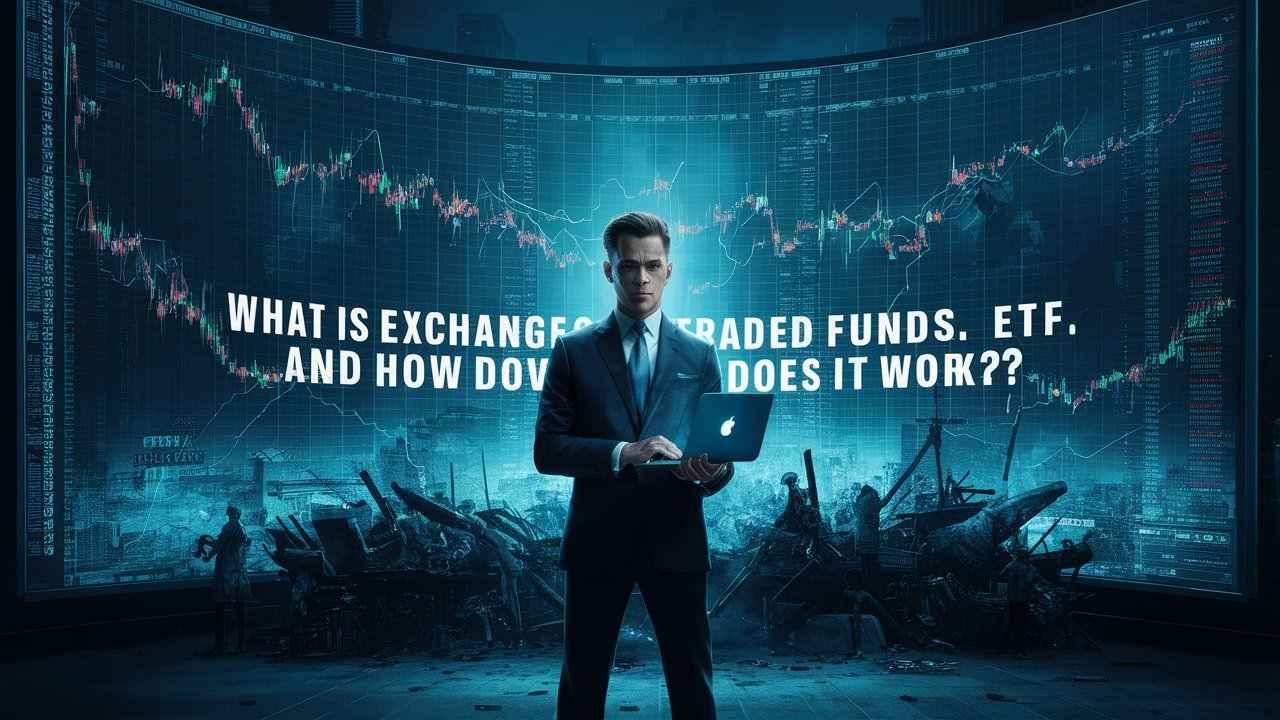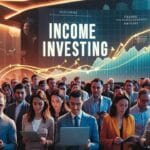Introduction to Exchange Traded Funds (ETFs)
Exchange Traded Funds, or ETFs, have revolutionized the way individuals invest in the stock market. Combining the simplicity of individual stock trading with the diversification benefits of mutual funds, ETFs have become one of the most popular investment vehicles for both seasoned professionals and retail investors. But what exactly are ETFs, and how do they function in today’s complex financial landscape?

Taking in the Basics of ETFs
Defining Exchange Traded Funds
At its core, an Exchange Traded Fund is a basket of securities that trades on an exchange, much like a stock. However, instead of representing ownership in a single company, ETFs encompass a variety of assets such as stocks, bonds, or commodities. This allows investors to buy into a collection of securities in a single transaction, providing instant diversification. Think of an ETF as a flexible investment tool that adapts to both broad and niche market strategies, depending on the underlying assets it holds.
The Origins and History of ETFs
ETFs trace their roots back to the early 1990s, when the first ETF, SPDR S&P 500, was launched. This innovative financial product was designed to mimic the performance of the S&P 500 index. The simplicity and cost-effectiveness of ETFs sparked their rapid growth in popularity. Over time, the ETF industry has exploded, with offerings that range from traditional index-tracking funds to more exotic options like leveraged and inverse ETFs. Today, ETFs are a cornerstone of modern investment portfolios.
How ETFs Differ from Mutual Funds and Index Funds
While ETFs share similarities with mutual funds and index funds, key differences set them apart. Unlike mutual funds, which are priced at the end of the trading day, ETFs trade throughout the day like individual stocks, offering flexibility in execution. Additionally, ETFs generally have lower expense ratios than mutual funds, making them a more cost-effective choice for many investors. Index funds also aim to track benchmarks, but ETFs take it further by offering liquidity and ease of trading, attributes that index funds lack.

How ETFs Work: A Simple Breakdown
The Structure of an ETF: What’s Inside
An ETF is composed of a variety of assets, depending on its focus. For example, an equity ETF will hold stocks, while a bond ETF will contain fixed-income securities. This structure is inherently diverse, spreading risk across multiple holdings instead of relying on a single company or asset. Investors gain exposure to a wide array of sectors, industries, or geographic regions with minimal effort. It’s like buying a ready-made portfolio in a single trade.
The Creation and Redemption Process of ETFs
Unlike traditional mutual funds, the creation and redemption of ETF shares occur in large blocks, often referred to as “creation units.” Authorized participants—typically large financial institutions—assemble the underlying assets of the ETF and exchange them for ETF shares. These shares are then sold on the open market, where retail investors can buy and sell them throughout the day. This unique process ensures liquidity and helps keep the ETF’s price in line with its underlying net asset value (NAV).
How ETFs are Traded on Stock Exchanges
ETFs are traded on stock exchanges just like individual stocks. Investors can place orders to buy or sell ETFs during regular market hours, and the price will fluctuate based on supply and demand. This flexibility allows for more sophisticated trading strategies, such as limit orders or stop-loss orders. Additionally, the bid-ask spread, the difference between what buyers are willing to pay and sellers are willing to accept, provides insight into the liquidity of the ETF.

Types of ETFs: Finding the Right Fit
Stock ETFs: Diversify Across Sectors
Stock ETFs are among the most popular types of ETFs. They offer exposure to a broad range of companies across various industries. Whether you’re interested in tech, healthcare, or energy, there’s likely a stock ETF that fits your needs. Stock ETFs can track indices like the S&P 500 or focus on specific sectors, allowing for both broad and targeted market exposure.
Bond ETFs: Stability and Income
For investors seeking steady income and reduced volatility, bond ETFs offer a reliable option. These ETFs invest in bonds issued by governments or corporations, providing interest income while offering less exposure to stock market fluctuations. Bond ETFs are often used to balance portfolios and provide stability during market downturns.
Commodity ETFs: Exposure to Gold, Oil, and More
Commodity ETFs give investors access to physical goods like gold, oil, and agricultural products without needing to directly purchase or store the commodities themselves. These ETFs track the price of the commodity, making them a convenient way to hedge against inflation or gain exposure to volatile yet potentially lucrative markets.
Sector and Industry ETFs: Focus on Specific Markets
Sector and industry ETFs concentrate on specific market segments, such as technology, financials, or healthcare. These ETFs provide investors with the opportunity to capitalize on the growth of specific industries while avoiding the complexities of stock-picking within that sector.
International ETFs: Investing Globally
International ETFs open the door to global investment opportunities. Whether it’s emerging markets in Asia or established economies in Europe, these ETFs provide exposure to foreign stocks and bonds. They are ideal for investors seeking to diversify geographically and hedge against domestic market risks.
Inverse and Leveraged ETFs: Risks and Rewards
Inverse ETFs are designed to profit when the market declines, while leveraged ETFs aim to magnify returns by using financial derivatives. Both of these ETF types are highly speculative and come with increased risk. They are best suited for experienced investors looking to employ advanced trading strategies.

The Key Players in ETFs
ETF Providers: Vanguard, BlackRock, and Others
Vanguard, BlackRock’s iShares, and State Street’s SPDRs dominate the ETF landscape. These providers are known for their low fees, extensive product lines, and reliable performance. They play a crucial role in the development, management, and marketing of ETFs, offering a wide range of options to suit varying investment strategies.
Market Makers and Their Role in ETF Liquidity
Market makers are essential in ensuring that ETFs remain liquid and tradable. They provide buy and sell quotes throughout the trading day, helping to narrow the bid-ask spread and enabling seamless trading for investors. Without market makers, ETFs could suffer from wide spreads and reduced liquidity.
Authorized Participants: The Backbone of ETF Trading
Authorized participants (APs) are institutional investors who create and redeem ETF shares. They ensure that the ETF’s price closely aligns with its net asset value by arbitraging any differences between the market price and the value of the underlying assets. Their involvement is critical to maintaining ETF liquidity and stability.

ETF Fees and Expenses: What You Need to Know
Expense Ratios: The True Cost of ETFs
The expense ratio is the annual fee that all ETF investors pay, expressed as a percentage of their investment. It covers the cost of managing the ETF and varies depending on the complexity of the fund. Low expense ratios are one of the primary reasons why ETFs have become so popular compared to mutual funds.
Trading Costs: Buying and Selling ETFs
While ETFs typically have low expense ratios, investors should be aware of the trading costs associated with buying and selling them. Commissions, bid-ask spreads, and short-term trading fees can impact your overall return. However, many brokerages now offer commission-free trading on ETFs, making them even more attractive.
Comparing ETF Fees to Mutual Funds
In most cases, ETFs offer a much lower cost structure than mutual funds. Mutual funds often come with hidden fees, such as front-end or back-end loads, that can eat into profits. ETFs, on the other hand, are more transparent in their pricing, and the lack of a minimum investment threshold makes them accessible to all investors.

The Benefits of Investing in ETFs
Low Fees and Cost Efficiency
One of the primary advantages of ETFs is their low cost. With minimal fees and no active management costs, investors keep more of their returns. This cost efficiency is particularly important over the long term, as lower expenses can significantly enhance overall gains.
Tax Efficiency: Understanding ETF Tax Advantages
ETFs are known for their tax efficiency. Unlike mutual funds, which can trigger capital gains taxes through internal trading, ETFs typically don’t create taxable events until shares are sold by the investor. This structure makes ETFs particularly attractive for tax-conscious investors.
Diversification: Building a Balanced Portfolio with ETFs
ETFs offer instant diversification, even for small investors. By owning a basket of securities, ETFs reduce the risk associated with individual stocks or bonds. Whether you’re looking to diversify across sectors, asset classes, or geographies, ETFs make it easy to build a well-rounded portfolio.
Liquidity: Easy to Buy and Sell
ETFs are highly liquid, allowing investors to buy and sell them throughout the trading day. This ease of access provides flexibility and control over investment timing. Whether you want to take advantage of market movements or quickly exit a position, ETFs offer a level of liquidity that traditional mutual funds can’t match.

Risks Associated with ETFs
Market Risk: The Impact of Volatility
Like all investments, ETFs are subject to market risk. When the overall market declines, the value of ETFs tied to that market will also drop. Volatility can cause rapid price fluctuations, making ETFs unsuitable for risk-averse investors seeking absolute stability.
Liquidity Risk: Understanding Thinly Traded ETFs
Not all ETFs are created equal when it comes to liquidity. Some niche or sector-specific ETFs may suffer from low trading volumes, which can lead to wider bid-ask spreads and increased costs. Investors should carefully consider an ETF’s liquidity before making a purchase.
Tracking Errors: When ETFs Don’t Follow the Index
While ETFs aim to mirror the performance of their underlying index or asset class, tracking errors can occur. This happens when the ETF’s performance deviates from that of the benchmark due to factors such as fees, management errors, or illiquid assets. Keeping an eye on an ETF’s tracking error is essential to ensure it’s performing as expected.
Leveraged and Inverse ETFs: High-Risk Strategies Leveraged and inverse ETFs
are designed for short-term trades, not long-term investments. The compounding effect can lead to significant losses if these ETFs are held over extended periods. While they offer the potential for outsized gains, they also come with elevated risk, making them suitable only for experienced traders with a high tolerance for risk.
How to Start Investing in ETFs
Choosing the Right Brokerage Account
Before investing in ETFs, selecting a brokerage account that meets your needs is crucial. Many online brokers now offer commission-free trades on ETFs, making it easier and cheaper to start investing. Look for a brokerage that offers a wide selection of ETFs, low fees, and user-friendly research tools.
Building a Portfolio with ETFs: The Core-Satellite Approach
The core-satellite approach is a popular strategy for constructing an ETF portfolio. The core consists of broad-market ETFs that provide exposure to large indices, while the satellite portion includes more specialized or sector-specific ETFs to enhance returns. This strategy offers a balance between stability and growth potential.
Dollar-Cost Averaging: A Strategy for ETF Investors
Dollar-cost averaging involves regularly investing a fixed amount of money into ETFs, regardless of market conditions. This method helps mitigate the impact of market volatility by spreading out purchases over time. It’s a simple and effective strategy for long-term investors looking to build wealth steadily.
ETFs in Retirement Accounts: A Smart Move?
The Role of ETFs in 401(k) and IRAs
ETFs are an excellent option for retirement accounts like 401(k)s and IRAs. Their low fees and tax efficiency make them a natural fit for long-term, tax-advantaged accounts. Additionally, the broad diversification offered by ETFs helps create a stable foundation for retirement investing.
Advantages of Using ETFs for Long-Term Retirement Planning
For long-term retirement planning, ETFs provide the dual benefits of low costs and diversification. Over time, these advantages compound, making ETFs an ideal choice for building wealth steadily and consistently. Investors can create balanced portfolios that weather the ups and downs of the market with minimal effort.
Active vs. Passive ETFs: Which Strategy is Better?
Understanding Passive ETFs: The Set-it-and-Forget-it Approach
Passive ETFs are designed to track a specific index or sector, requiring little to no management. They are a great option for investors who want a hands-off, long-term approach. The simplicity and low fees associated with passive ETFs make them a popular choice for those looking to replicate market performance without constantly monitoring their investments.
Active ETFs: Do They Really Outperform?
Active ETFs are managed by professionals who aim to outperform the market. While the potential for higher returns exists, these ETFs often come with higher fees and greater risk. Active management requires skill and timing, and not all active ETFs live up to their promise of beating the market.
Pros and Cons of Active and Passive Strategies
Both active and passive ETFs have their strengths and weaknesses. Passive ETFs offer lower costs and greater simplicity, making them ideal for most investors. However, active ETFs provide the opportunity for higher returns at the cost of increased volatility and fees. The choice ultimately depends on the investor’s risk tolerance and goals.
How to Research and Select ETFs
Evaluating ETF Holdings: What’s Inside the Fund?
Before investing in an ETF, it’s essential to evaluate the fund’s holdings. Understanding what assets the ETF invests in will help you determine if it aligns with your investment objectives. Look for ETFs that provide transparency in their holdings and offer the diversification you need.
Assessing ETF Performance: Beyond Just Returns
While returns are important, they don’t tell the whole story. Investors should also consider factors like volatility, tracking error, and fees when evaluating an ETF’s performance. A well-performing ETF should offer a balance between risk and reward, aligning with your overall strategy.
Using ETF Screeners to Find the Best Funds
ETF screeners are valuable tools that allow investors to filter ETFs based on criteria such as performance, expense ratio, and holdings. These tools simplify the research process, helping you quickly find ETFs that meet your specific investment needs.
The Role of ETFs in a Global Investment Strategy
ETFs as a Tool for International Exposure
For investors looking to diversify globally, international ETFs offer a convenient and cost-effective way to access foreign markets. Whether it’s emerging markets or developed economies, these ETFs provide exposure to the growth and risks of global investing.
Hedging Currency Risk with Foreign ETFs
Investing in international ETFs comes with currency risk, as fluctuations in exchange rates can impact returns. However, certain ETFs offer currency hedging, allowing investors to mitigate this risk and focus purely on the performance of the underlying foreign assets.
The Growth of Global ETFs: Opportunities and Trends
Global ETFs are experiencing rapid growth as investors seek to capitalize on international markets. Emerging markets, in particular, offer exciting opportunities for growth, while developed markets provide stability. Keeping an eye on global trends can help investors identify new opportunities in the world of ETFs.
Conclusion: Is an ETF Right for You?
ETFs offer a versatile and cost-effective way to invest, whether you’re a seasoned pro or just starting. With their low fees, diversification, and liquidity, they are suitable for a wide range of investment strategies. However, like any investment, ETFs come with risks. It’s crucial to align your choice of ETFs with your financial goals, risk tolerance, and investment horizon. If you’re looking for flexibility, diversification, and cost savings, ETFs might be the perfect fit for your portfolio.
People also ask
What is an ETF example?
An example of an ETF is the SPDR S&P 500 ETF (SPY), which tracks the S&P 500 index. This ETF holds the stocks of 500 large U.S. companies, providing broad exposure to the American stock market. Another example is the Vanguard Total Stock Market ETF (VTI), which includes a wider variety of U.S. stocks, covering both large and small companies. These ETFs allow investors to own a diversified portfolio of stocks with just one purchase.
Is ETF a good investment?
ETFs can be a good investment for many individuals due to their low fees, diversification, and liquidity. They are ideal for both beginners and experienced investors because they allow easy access to different sectors and markets without the need to pick individual stocks. ETFs also offer flexibility in terms of trading, as they can be bought and sold throughout the trading day. However, like any investment, they are subject to market risks, and their performance depends on the assets they track.
Is ETF better than mutual fund?
ETFs are often considered better than mutual funds for certain investors because they tend to have lower expense ratios and offer more trading flexibility. ETFs can be traded like stocks throughout the day, while mutual funds are priced only at the end of the trading day. Additionally, ETFs generally have fewer minimum investment requirements and provide greater transparency regarding their holdings. However, mutual funds may offer professional management, which can be beneficial for investors who prefer active management strategies.
Is ETF halal?
An ETF can be halal if it adheres to Shariah-compliant investment principles. These ETFs avoid companies involved in activities such as alcohol, gambling, and interest-based financial institutions. Several halal ETFs, such as the Wahed FTSE USA Shariah ETF (HLAL), follow strict guidelines to ensure that they are in line with Islamic law. It’s essential for Muslim investors to research ETFs carefully to ensure they comply with halal standards.
What is an ETF vs stock?
An ETF differs from a stock in that it is a collection of multiple assets, such as stocks, bonds, or commodities, bundled together into a single fund. When you invest in a stock, you’re purchasing a share of ownership in a single company. In contrast, an ETF allows you to own a diversified portfolio of assets in one transaction. This makes ETFs generally less risky than individual stocks, as the performance is spread across many companies or assets, reducing the impact of any single entity’s poor performance.
How does an ETF make money?
ETFs make money in several ways: through capital appreciation, dividends, and interest income. When the value of the underlying assets in the ETF rises, the price of the ETF shares increases, allowing investors to sell their shares for a profit. Many ETFs also distribute dividends if the companies within the fund pay them. Additionally, bond ETFs earn interest from the bonds they hold, which is passed on to investors.
Is bitcoin an ETF?
Bitcoin is not an ETF, but there are Bitcoin ETFs designed to track the price of Bitcoin or Bitcoin-related assets. These ETFs, such as the ProShares Bitcoin Strategy ETF (BITO), offer investors exposure to Bitcoin without directly owning the cryptocurrency. Bitcoin ETFs invest in Bitcoin futures or other financial products related to Bitcoin, providing a regulated and accessible way for investors to get involved in the cryptocurrency market.
How do you use an ETF?
Investors use ETFs to achieve a wide range of financial goals. One of the most common uses is for portfolio diversification, as ETFs can cover various sectors, industries, or asset classes in a single fund. ETFs are also frequently used for long-term investing, offering a cost-effective way to build a balanced portfolio. Additionally, ETFs can be employed for more tactical strategies, such as sector rotation or hedging, depending on market conditions and personal investment objectives.
What is an ETF vs. index fund?
Both ETFs and index funds aim to track the performance of a specific market index, but they differ in how they are traded and managed. ETFs are traded throughout the day on stock exchanges, allowing for real-time pricing. Index funds, on the other hand, are typically bought and sold at the fund’s net asset value (NAV), which is calculated at the end of the trading day. ETFs generally have lower expense ratios compared to index funds and offer more flexibility for active traders.
What are the top 10 ETFs?
Some of the most popular and widely held ETFs include:
- SPDR S&P 500 ETF (SPY) – Tracks the S&P 500.
- Vanguard Total stock market ETF (VTI) – Covers the entire U.S. stock market.
- iShares MSCI Emerging Markets ETF (EEM) – Offers exposure to emerging markets.
- Invesco QQQ ETF (QQQ) – Tracks the Nasdaq 100.
- iShares Russell 2000 ETF (IWM) – Focuses on small-cap U.S. stocks.
- Vanguard FTSE Developed Markets ETF (VEA) – International developed markets.
- iShares Core U.S. Aggregate Bond ETF (AGG) – Tracks U.S. investment-grade bonds.
- Schwab U.S. Dividend Equity ETF (SCHD) – Focuses on dividend-paying U.S. stocks.
- SPDR Gold Shares (GLD) – Tracks the price of gold.
- iShares MSCI EAFE ETF (EFA) – Provides exposure to developed markets outside of North America.
Why is ETF better?
ETFs are considered better than many other investment vehicles due to their low costs, liquidity, and flexibility. They allow investors to diversify across multiple assets in a single transaction, reducing the need for complex portfolio management. ETFs also offer transparency, as their holdings are typically disclosed daily, and they have lower management fees compared to mutual funds. Additionally, the ability to trade ETFs throughout the day makes them a more flexible option for investors who want control over the timing of their trades.
Can I sell ETFs anytime?
Yes, ETFs can be bought and sold anytime during normal market hours, just like stocks. This flexibility is one of the key advantages of ETFs over mutual funds, which can only be traded at the end of the trading day. With ETFs, you can take advantage of intraday price fluctuations to buy or sell at a favorable price. However, it’s essential to be aware of the liquidity of the specific ETF you’re trading, as less liquid ETFs might have wider bid-ask spreads.
Is ETF a money market?
An ETF is not the same as a money market fund, although there are money market ETFs that provide exposure to short-term, low-risk securities similar to money market funds. Money market ETFs invest in highly liquid, low-risk instruments such as Treasury bills, commercial paper, and short-term corporate bonds. They are typically used by investors looking for a safe place to park cash temporarily, though the returns are generally lower compared to equity or bond ETFs.
How is ETF work?
ETFs work by pooling investors’ money to purchase a basket of assets, which can include stocks, bonds, commodities, or a mix of asset classes. The ETF shares are then traded on an exchange, allowing investors to buy or sell shares throughout the trading day. The price of an ETF fluctuates based on the value of the underlying assets and investor demand. ETFs typically follow a specific index or strategy, and their performance mirrors that of the tracked assets.
What are the three types of ETFs?
The three primary types of ETFs are:
- Stock ETFs – These track a specific stock index, such as the S&P 500, or focus on certain sectors or industries.
- Bond ETFs – These provide exposure to government, corporate, or municipal bonds, offering a way to invest in fixed-income securities.
- Commodity ETFs – These ETFs invest in physical commodities like gold, oil, or agricultural products, allowing investors to gain exposure to commodity markets without directly buying the physical asset.









